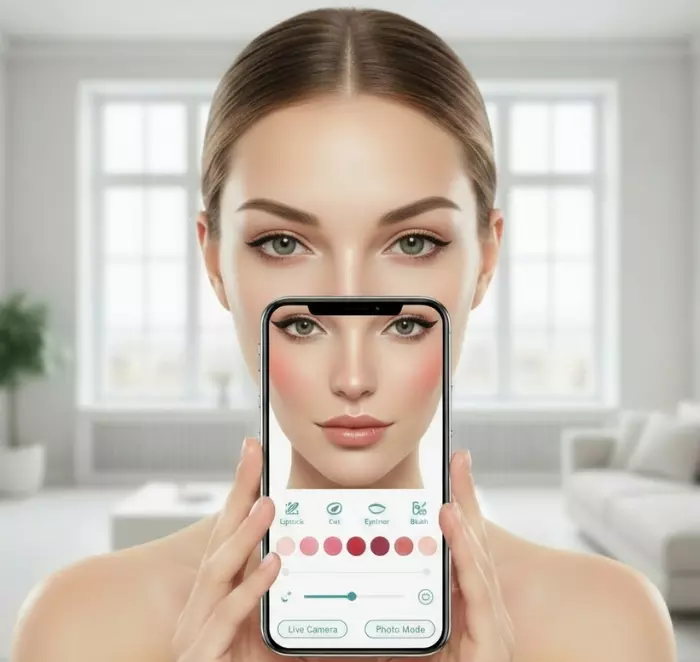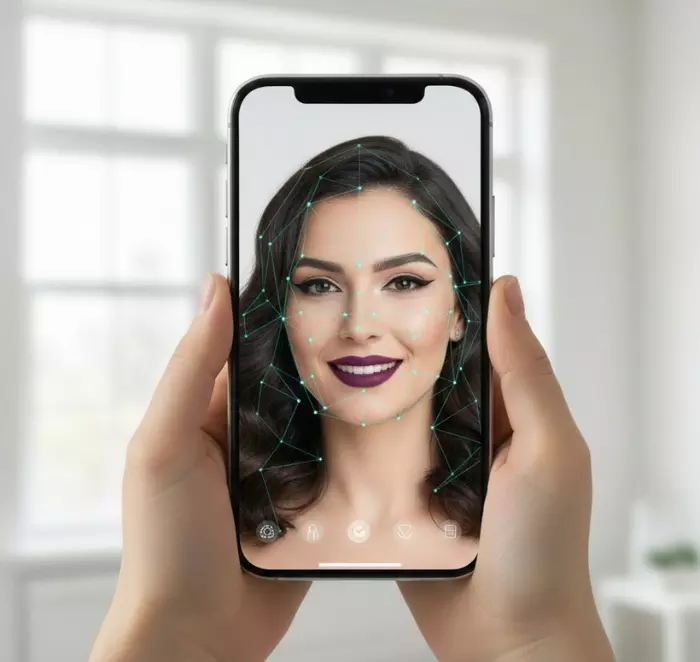Virtual makeup SDK for your beauty brand


Live makeup experience


Realistic AR rendering
Customizable AR solutions

Frequently asked questions
A virtual makeup SDK enables you to integrate augmented reality (AR) makeup try-on features into your business apps and websites. It can track facial landmarks to apply digital makeup in real time. Integrating virtual makeup SDKs into your brand’s online or in-store platforms provides your shoppers with personalized purchasing experiences.
The face tracking technology of virtual makeup SDKs can detect key facial points, such as eyes, nose, mouth, etc., to apply virtual makeup in an accurate manner. You or your developers will use the images of your makeup products to create their digital versions and ensure realism. Now, consumers can pick their favorite shades and products, and the SDK applies them to their live images in real-time through their devices’ cameras.
A virtual makeup SDK offers a personalized and interactive way for your shoppers to engage with products. Since virtual makeup SDKs provide try-before-buy experiences for your customers, they will enhance your sales and minimize returns. As a result, your overall cost will be reduced, and you will have valuable analytics on customer preferences and popular products.
First, you need to contact a virtual makeup SDK provider, like GlamSR, to get a license or SDK package from them. Then, you should set up a development environment for your mobile or web platform. After that, you will integrate camera access and face tracking modules. Now, it is the time to load or prepare makeup assets, such as textures, colors, finishes, etc. Finally, you need to configure the SDK and test it across devices, lighting conditions, skin tones, etc.
You should consider device performance for realistic AR rendering. Also, the accuracy of the results of virtual makeup SDKs depends on lighting conditions and the environment of consumers. It may vary based on your customers’ diverse skin tones. You need to prepare good cosmetic assets to deliver color, texture, or finish variations. Plus, it is essential to handle consumer data privacy and security in a responsive manner. If you own small brands or startups, you may find the integration costs of the SDKs high, along with developmental complexity.
Enhanced realism through AI and graphics (better color fidelity, finishes, shadows, lighting adaptation) Improved device support, including web, smart mirrors, and AR glasses Wider personalized recommendations (e.g., shade finder via skin analysis) Speedy time-to-market and easy asset onboarding for brands Increasing adoption and usage in e-commerce, live-streaming, and social commerce.














